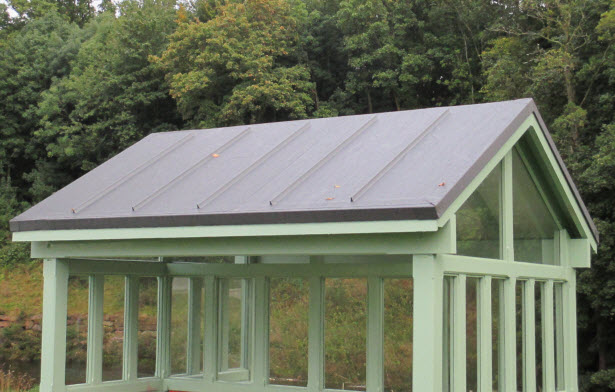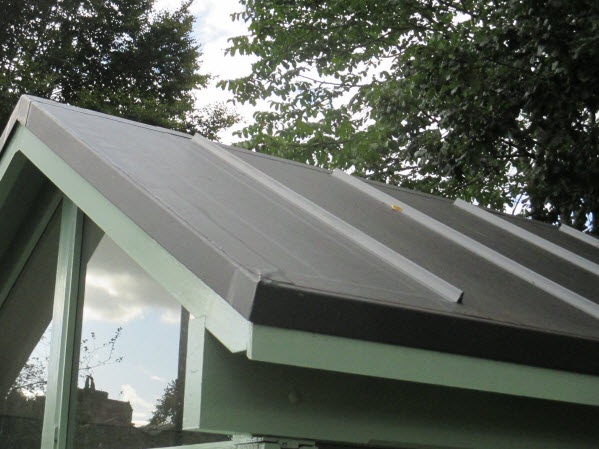Is An EPDM Rubber Roof Membrane The Future For Your Shed Roof?
(An introduction to the EPDM rubber roof membrane)
It was December of 2010. It had snowed, and snowed and snowed.
After the heavy snowfall the roads were very slippery. As I approached the busy T junction I realised that I was going too fast. With three children in the back this was a potentially fatal mistake.
I pressed on the brakes and the car started to judder and slow quickly. I stopped at the junction with inches to spare.
That was the magic of ABS (Anti-lock Braking System) by having an electronic system that presses and releases the brakes sixteen times per second modern cars have achieved a much higher level of safety. ABS was first developed for Formula 1 racing cars and quickly made the transition from the demanding racing environment to the everyday run-around.
EPDM rubber roofing was developed in a very demanding environment too
Large area industrial roofs are a similar environment to Formula 1. If the roof covering fails and water leaks in, machinery and industrial processes generating millions of dollars per day can be halted. The companies that own and manage these buildings know and measure the performance of their roofs. If the roof does not perform then they quickly go somewhere else and adopt another system.
EPDM rubber roofs were first introduced in the 1950s and 60s and many of those roofs are still going strong. The thin EPDM rubber membranes that form the basis of the system are still performing leak free over 50 years later.
 Attractive EPDM rubber roof. With bonded features to simulate lead rolls
Attractive EPDM rubber roof. With bonded features to simulate lead rolls
The basis of the EPDM rubber roof membrane is just over a millimetre thick
Though commercial ones are up to 2 or 3 mm thick. EPDM stands for, Ethylene Propylene Diene Monomer. It is a very durable sheet material that is highly resistant to degradation from UV light, very stretchable and waterproof. It is used in many other products apart from roofing membranes including door seals, electrical cable jointing, drive belts etc . So it is a widely used and understood material.
The resistance to UV and its waterproofing ability are important to the function of the system. Its ability to stretch is another reason for its success. Roofs are subject to direct sunlight and as a result very large temperature variations. As the roof structure expands and contracts with these temperature changes the roofing membranes easily stretches to accommodate them.
The EPDM rubber roof membrane has made the leap from industrial to domestic roofs
EPDM roofing material is routinely used for flat roof extensions and also for garden offices. In these two applications they are replacing the more traditional three layer felt system. The weakness of the felt system was its relatively short lifespan of 10-15 years. The felt system was also environmentally not up to the same standard as the EPDM rubber roofing material. The old roofing felt could not be recycled and water that ran off the roof was not clean enough to use in 'grey water' recycling.
EPDM can be recycled at the end of its life. The membrane is simply removed, taken to the recycling plant and made in to new rubber roofing! The water run off from the roof is also sufficiently 'pure' that it can be stored and then used in 'grey water' applications such as toilet flushing. The environmental credentials are attractive and so is its ease of installation.
There are a variety of ways to install rubber roofs
The EPDM rubber roof membrane can accommodate most types of roof; new roofs and existing roofs. This includes cold roof, warm roof, green roofs, trafficked roofs and non-trafficked roofs.
The simplest system is to prepare the plywood decking substrate and then bond the rubber roofing to this deck.
The rubber sheeting is supplied in sheets that are very long and wide. For small roofs this is ideal as one sheet may cover the entire roof. It is always seams and junctions where leaks are most likely to occur and so having a whole roof covered by one sheet of material is a huge benefit.
If there are internal corners, external corners, upstands and penetrations through the EPDM rubber roof membrane these need to be made using premade reinforcing pieces and bonded with specially supplied adhesive. On large industrial roofs this bonding needs to be done by trained operative as it is very important to the performance of the system. On your shed roof, just follow the instructions and take special care.
 Close up of roof. Showing eaves, verge and ridge details.
Close up of roof. Showing eaves, verge and ridge details.
The EPDM rubber roof membrane has jumped from industrial to domestic roof
Is it going to jump to your shed roof? An important factor to consider when deciding on a rubber roof for your shed is the concept of whole life cost. On the face of it a traditional single ply felt roof will be cheapest. However you will need to replace or repair this every five to seven years. Bitumen felt tiles last a bit longer at up to 20 years. The EPDM roofing material has a projected lifespan of over 40 years.
So when you are costing the alternatives then you will need to divide the material cost of the roof over the number of years that the roof will last. The labour cost for installation of each system will be similar, but then you will need to replace the bitumen felt tiles twice and the bitumen felt roof five or six times during one life cycle of the rubber roof.
The Transition From Bitumen Felt to Rubber is Taking Place
It is taking a bit longer than it took for ABS braking to make the leap from Formula 1 to the every day car, but for me the logic behind using EPDM rubber roofing materials is inescapable.
Related posts:
- How to install EPDM on a large shed roof
- Installing EPDM on a small shed roof
- EPDM is the ideal membrane for making a green shed roof

Keep in touch with our monthly newsletter
Shed Building Monthly




